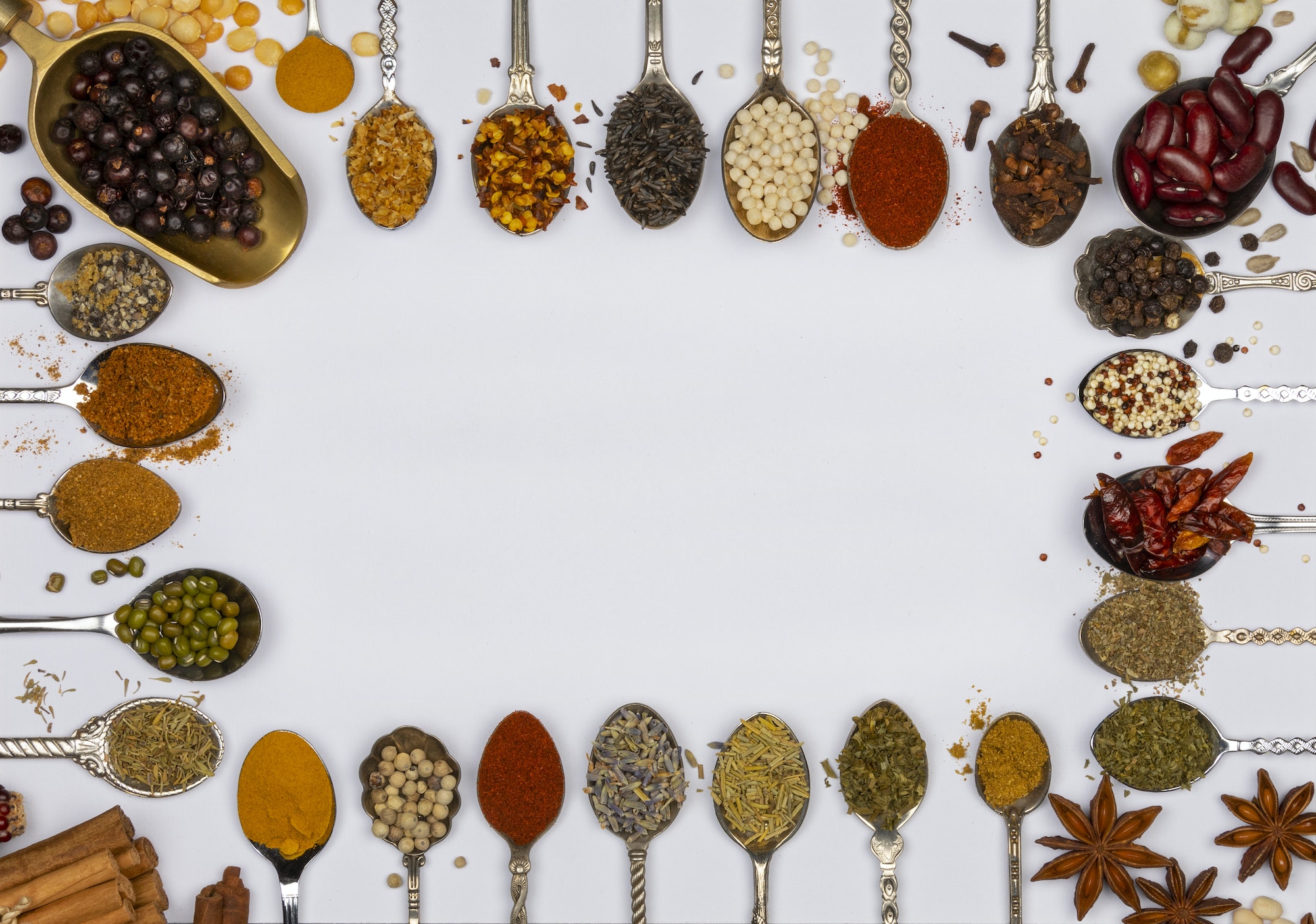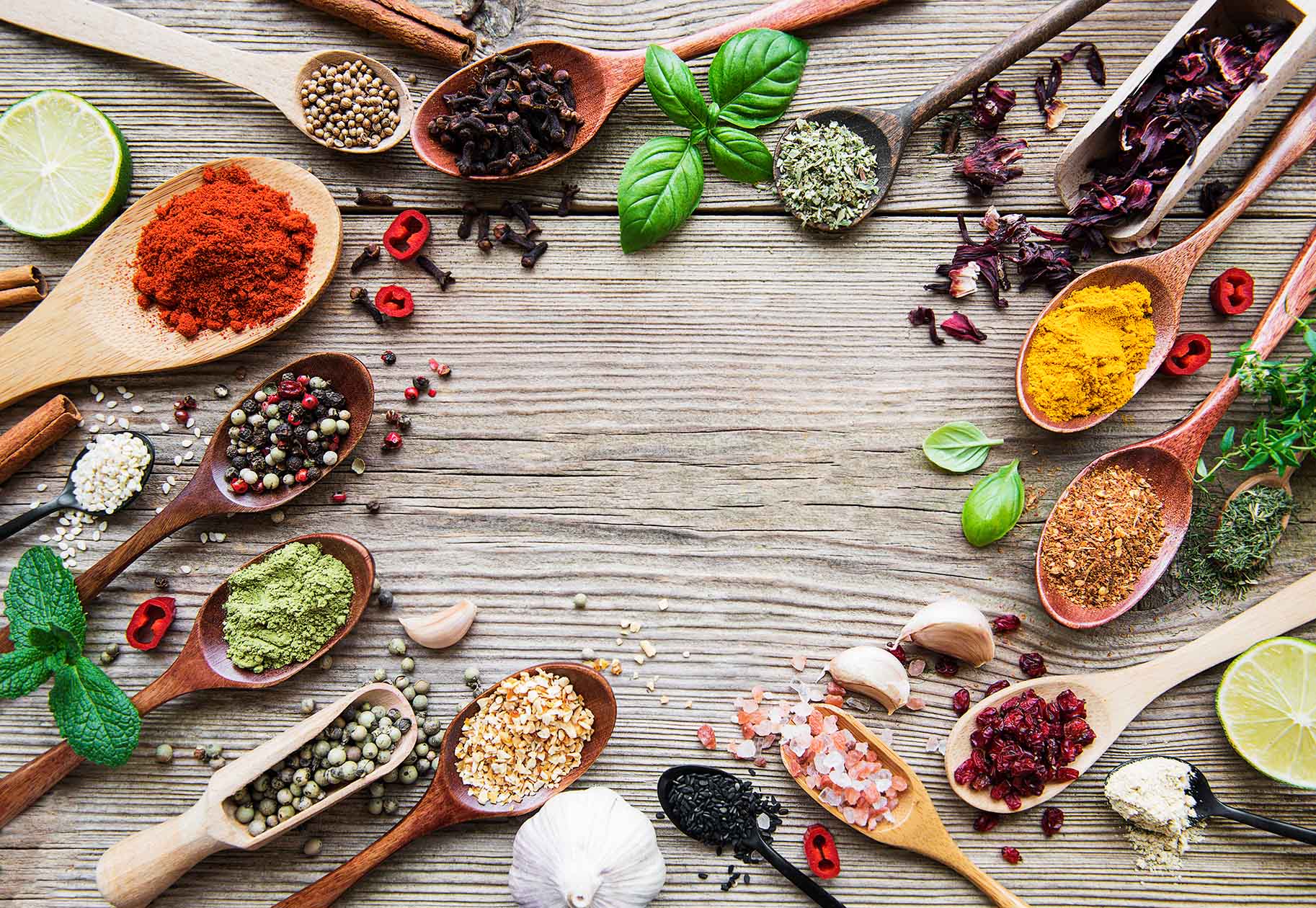5 Great Ways to Elevate Your Cooking with Herbs and Spices


Table of Contents
Introduction
Herbs and spices are the backbone of any great dish. Whether you’re a professional chef or a home cook, using the right herbs and spices can take your cooking to the next level. They add flavor, depth, and complexity to dishes, and can even provide health benefits. However, with so many options to choose from, it can be overwhelming to know where to start.
In this blog post, we’ll be sharing 5 ways to elevate your cooking with herbs and spices. From experimenting with new flavors to making your own spice blends, we’ll provide you with tips and techniques to help you take your cooking to the next level. Whether you’re a seasoned cook or just starting out, these tips will help you unlock the full potential of herbs and spices in your kitchen. So let’s dive in!
Experiment with New Flavors
One of the most exciting aspects of cooking with herbs and spices is the opportunity to experiment with new flavors. While you may have your go-to herbs and spices that you use regularly, it’s important to be open to trying new ones.
There are countless herbs and spices available, and each one has its own unique flavor profile. For example, sumac has a tangy, lemony flavor, while za’atar has a nutty, earthy taste. Chinese five-spice is a blend of five different spices (star anise, cloves, cinnamon, Szechuan pepper, and fennel seeds) and is commonly used in Chinese cuisine.
Try experimenting with new herbs and spices by adding them to your favorite dishes. For example, try adding sumac to roasted vegetables, za’atar to hummus, or Chinese five-spice to stir-fries. Don’t be afraid to get creative and try new combinations. You never know what delicious flavor profiles you might discover!

Learn Proper Storage Techniques
Proper storage is essential for maintaining the freshness and flavor of your herbs and spices. When stored improperly, herbs and spices can lose their potency and flavor, resulting in bland or unappetizing dishes.
To keep your herbs and spices fresh, store them in a cool, dry place away from direct sunlight. Avoid storing them near the stove or other heat sources, as heat can cause the flavors and aromas to dissipate.
It’s also important to keep your herbs and spices organized and labeled for easy access. Use a spice rack or drawer to keep your spices organized and within reach. Label your spices with the date of purchase and expiration date so you know when to replace them.
By storing your herbs and spices properly, you’ll ensure that they remain fresh and flavorful, allowing you to get the most out of them in your cooking.
Make Your Own Spice Blends
One way to elevate your cooking with herbs and spices is by making your own spice blends. By making your own blends, you can customize the flavor to your liking and avoid preservatives and additives found in store-bought blends.
To make your own spice blend, start by choosing your herbs and spices. You can use a single herb or spice or a combination of several. For example, you might create a Mexican spice blend with cumin, chili powder, and oregano, or a Mediterranean blend with rosemary, thyme, and garlic.
Once you’ve chosen your herbs and spices, simply mix them together in a small bowl or jar. Store the blend in an airtight container and use it in your cooking as desired.
Making your own spice blends is a fun and easy way to experiment with different flavor combinations and take your cooking to the next level. Plus, it’s a great way to impress your dinner guests with a unique and flavorful dish!
Blend Recipes
Here are some spice blend recipes. We are working on a master spice blend list so be watching for that!

Ras el Hanout Spice Blend
Ingredients
- 1 teaspoon ground cinnamon
- 1 teaspoon ground cumin
- 1 teaspoon ground coriander
- 1 teaspoon ground ginger
- 1/2 teaspoon ground cardamom
- 1/2 teaspoon ground nutmeg
- 1/2 teaspoon ground allspice
- 1/4 teaspoon ground turmeric
Instructions
- Mix all of the spices together in a bowl and store in an airtight container.
Notes

Garam Masala Spice Blend
Ingredients
- 2 teaspoons ground cinnamon
- 2 teaspoons ground cardamom
- 2 teaspoons ground cloves
- 2 teaspoons ground cumin
- 2 teaspoons ground coriander
- 2 teaspoons ground black pepper
Instructions
- Mix all of the spices together in a bowl and store in an airtight container.
Notes

Adobo Spice Blend
Ingredients
- 2 tablespoons garlic powder
- 2 tablespoons onion powder
- 1 tablespoon ground cumin
- 1 tablespoon dried oregano
- 1 tablespoon chili powder
Instructions
- Mix all of the spices together in a bowl and store in an airtight container.
Notes

Cajun Seasoning Blend
Ingredients
- 2 tablespoons paprika
- 1 tablespoon cayenne pepper
- 1 tablespoon garlic powder
- 1 tablespoon onion powder
- 1 tablespoon dried oregano
- 1 tablespoon dried thyme
- 1 tablespoon ground black pepper
Instructions
- Mix all of the spices together in a bowl and store in an airtight container.
Notes

Italian Seasoning Blend
Ingredients
- 2 tablespoons dried basil
- 2 tablespoons dried oregano
- 2 tablespoons dried rosemary
- 2 tablespoons dried thyme
- 1 tablespoon dried marjoram optional
- 1 tablespoon dried sage optional
Instructions
- Mix all of the herbs together in a bowl and store in an airtight container.
Notes
Use Herbs and Spices in Unexpected Ways
Another way to elevate your cooking with herbs and spices is by using them in unexpected ways. While herbs and spices are commonly used in savory dishes, they can also add depth and complexity to sweet dishes, cocktails, and even baked goods.
For example, try adding cinnamon to your morning coffee or tea, or adding a pinch of smoked paprika to your hot chocolate for a smoky, savory twist. You can also add fresh herbs to cocktails for a burst of freshness and flavor. For example, try adding mint to a mojito or rosemary to a gin and tonic.
In baking, herbs and spices can add warmth and complexity to sweet treats. Cinnamon and nutmeg are commonly used in apple pies and pumpkin bread, while cardamom can add a spicy, exotic flavor to cookies and cakes.
By using herbs and spices in unexpected ways, you can create unique and delicious dishes that are sure to impress. Don’t be afraid to get creative and experiment with different flavors and combinations!

Know When to Add Herbs and Spices
Knowing when to add herbs and spices to your dishes is just as important as choosing the right ones. Adding herbs and spices too early or too late in the cooking process can affect the flavor and aroma of the dish.
In general, it’s best to add fresh herbs at the end of the cooking process to preserve their flavor and aroma. For example, add chopped fresh basil to a tomato sauce just before serving, or sprinkle fresh cilantro over a bowl of chili.
Dried herbs and spices can be added earlier in the cooking process to allow their flavors to infuse into the dish. However, adding them too early can cause them to lose their potency. As a general rule, add dried herbs and spices about 30 minutes before the end of the cooking process.
When adding herbs and spices, it’s also important to balance the flavors. Start with a small amount and add more as needed. Avoid over-seasoning, as this can overwhelm the dish and mask the natural flavors of the ingredients.
By knowing when to add herbs and spices, you can ensure that your dishes are flavorful and well-balanced, making the most of your herbs and spices.
Conclusion
Incorporating herbs and spices into your cooking is a great way to add flavor, depth, and complexity to your dishes. By experimenting with new flavors, learning proper storage techniques, making your own spice blends, using herbs and spices in unexpected ways, and knowing when to add them, you can elevate your cooking and impress your dinner guests.
Remember to keep your herbs and spices organized and labeled for easy access, and don’t be afraid to get creative and try new combinations. With these tips and techniques, you’ll be well on your way to becoming a master of herbs and spices in the kitchen. Happy cooking!


1 Comment
[…] Check out our article on elevating your cooking with spices! […]
March 15, 2023 - 4:05 amComments are closed.